NOV 17, 2016
We took a red-eye non-stop flight from New York to Guayaquil (7 hours). Sleepy-eyed, we arrived at the José Joaquín de Olmedo International Airport at 6:35am. The Budget car rental at the airport wasn’t open until 8am so we had to wait for a short while but we were out of the airport by 9am with our fairly new Chevrolet Sail, our, hopefully, reliable travel companion for the next 11 days.
Our first unplanned stop was a rest area at the toll-booth in Duran (Estación Peaje Duran), about 40 minutes drive from the airport. As we got off the car, we were instantly greeted by various unfamiliar birds in the tropics, a mere few feet away from us. Oh how I love birding in South America! We saw our first PACIFIC PARROTLET, PACIFIC HORNERO and CROAKING GROUND-DOVE. Also seen are SAFFRON FINCH, SOCIAL FLYCATCHER, BLUE-GRAY TANAGER, SMOOTH-BILLED ANIs (so we think, anyone think they are Groove-billed Anis, let us know), VARIABLE SEEDEATER, and SOUTHERN HOUSE WREN.
Our first unplanned stop was a rest area at the toll-booth in Duran (Estación Peaje Duran), about 40 minutes drive from the airport. As we got off the car, we were instantly greeted by various unfamiliar birds in the tropics, a mere few feet away from us. Oh how I love birding in South America! We saw our first PACIFIC PARROTLET, PACIFIC HORNERO and CROAKING GROUND-DOVE. Also seen are SAFFRON FINCH, SOCIAL FLYCATCHER, BLUE-GRAY TANAGER, SMOOTH-BILLED ANIs (so we think, anyone think they are Groove-billed Anis, let us know), VARIABLE SEEDEATER, and SOUTHERN HOUSE WREN.
We then drove another 30 minutes or so to get to our next stop, Manglares Churute Ecological Reserve Ranger Station. Our original plan was to look for Horned Screamers around the ranger station as we didn't see any from the road while driving through the reserve. The ranger who is also a bird guide at the reserve didn't speak any English but he phoned someone else who did and he suggested we take the mangrove tour (this reserve's main tourist attraction) but we only had an hour so he decided to take us to a dry shrub land to see Horned Screamers. From the station, we drove south on Route 25 for about 10 minutes and made a left onto a dirt road after a bridge. In the reserve, we saw hundreds and hundreds of SAVANNA HAWKs. They were basically everywhere we looked. While driving on the dirt road, we saw LIMPKIN, OSPREY, GREAT EGRET, SNOWY EGRET, CATTLE EGRET, SNAIL KITE, TURKEY VULTURE and many BLACK VULTUREs.
We made a quick stop at a reservoir to check out water birds. We were excited to find some familiar some not-so-familiar birds there: COMB DUCKs, FULVOUS WHISTLING DUCKs, BLACK-BELLIED WHISTLING DUCKs, COCOI HERON, AMERICAN WOODSTORK, ROSEATE SPOONBILL, ANHINGA, WATTLED JACANA, BLACK-NECKED STILTs, SPOTTED SANDPIPER, LEAST GREBEs and PIED-BILLED GREBEs.
We continued on foot to drier land in search of Screamers and there they were, all hanging out on top of the tree. Seeing their horns made the walk in 90-degree-plus heat all worthwhile. In the drier parts, we saw HORNED SCREAMERs, NORTHERN CRESTED CARACARA, WHITE-TAILED KITE, SOUTHERN BEARDLESS TYRANNULET, VERMILION FLYCATCHER, PERUVIAN MEADOWLARKs and SCRUB BLACKBIRDs.
We drove on curvy yet well-paved mountain road for about another 2.5 hours to get to the ranger station at the Cajas National Park. Due to its high altitude (13,054 feet), the area was barren, windy and cold, just didn’t feel like a place with a lot of birds. We took a steep trail down to Laguna Toreadora. When climbing back up, we had to take a few moment every few steps to catch our breath. Despite the steep climb in thin air, we were well rewarded with the sights of some high altitude paramo specialties. Since there were more rocks than trees, birds were easily seen and they seemed not to be afraid of us at all. We saw TIT-LIKE DACNIS, CHESTNUT-WINGED CINCLODES, PARAMO PIPIT, RED-RUMPED BUSH-TYRANT, PLUMBEOUS SIERRA FINCH, HOODED SISKIN (female), BROWN-BACKED CHAT-TYRANT and GREAT THRUSH.
Sadly, we were now done birding for the day and just had to drive another hour to get to the town of Cuenca where we will be staying for the night. By the time we got to the lovely Hotel Inca Real, we were absolutely exhausted. We had a nice soup and fried rice at a small family-run restaurant next to our hotel and were asleep by 8pm.
Nov 18, 2016
We decided to give ourselves a little break and had our *late* breakfast at the hotel at 7am. What an amazing breakfast it was. I would stay at this hotel again just for the breakfast. We left the hotel around 8:30am in a hurry, knowing that we had a very long drive ahead of us to the Copalinga Ecolodge in Zamora. After driving yet another curvy mountainous road for approximately 3 hours, we reached the town of Loja. From Loja, we had another 38-mile drive to get to the town of Zamora then to our lodge. The road from Loja to Zamora was particularly curvy with an unexpected mudslide which was blocking one side of the road and the drive took us well over 2 hours. It was almost 2:30pm when we got to the lodge. The lodge was a bit out of the way but their banana feeders were supposed to attract many hard-to-see species of tanagers. You could imagine how disappointed we were when the owner, Catherine, told us that tanagers stopped coming to the feeders since 2 weeks ago due to the dry weather. However, we were in for a very unexpected treat: Catherine asked us if we were interested in coming to the feeding of ever so elusive Gray Tinamou. At 4:30pm, she took us to the feeding spot and told us to wait behind the wooden blind. As soon as she put out the food, there they were: two beautiful GRAY TINAMOUs with the company of GRAY-FRONTED DOVEs. We also saw a few nice birds around the lodge ground: TURQUOISE TANAGER, LITTLE WOODSTAR, and VIOLET-HEADED HUMMINGBIRDs. We had a nice dinner at the lodge and turned in before 8:30pm.
Nov 19, 2016
Finally back to our regular *birder* schedule, we had our breakfast at 5:30am at the lodge and met our guide at 6am to bird the renowned Podocarpus National Park. We met a very nice Canadian birder at the lodge and offered him to come along so we could all benefit from the expertise of a bird guide who is also a ranger at the park. Besides, our new company spoke Spanish pretty well and our guide spoke no English though except for bird names. We (one true New Yorker and one Japanese-born-Brooklynite), on the other hand, no habla español so it was a win-win for all of us. The entrance to the Park was about a mile away from the lodge. We parked our car and head out to much anticipated birding adventure! As we were already made aware, birds were more scarce than usual due to the dry weather but we saw a plenty of amazing birds. The birds we saw are: SWAINSON'S THRUSH, SILVER-BEAKED TANAGERs, BLUE-AND-WHITE SWALLOWs, SWALLOW TANAGERs, YELLOW-THROATED BUSH-TANAGERs, INCA JAY, HIGHLAND MOTMOT, SLATE-THROATED WHITESTARTs, OLIVE-SIDED FLYCATCHER, ORANGE-CROWNED EUPHONIAs, MOUNTAIN WREN, PLUMBEOUS PIGEON, ROADSIDE HAWK, SOUTHERN ROUGH-WINGED SWALLOWs, GREEN HERMIT, PARADISE TANAGERs, BLUE_NECKED TANAGERs, GREEN-AND-GOLD TANAGERs, SPOTTED TANAGER, GOLDEN TANAGERs, BAY-HEADED TANAGERs, BUFF-THROATED SALTATORs, SLATY-CAPPED FLYCATCHER, RUFOUS-RUMPED FOLIAGE-GLEANER, WHITE-CROWNED MANAKINs, PLUMBEOUS KITE, RUFOUS-NAPED BRUSH-FINCH and RUSSET OROPENDORA.
Unfortunately, we had to be back at the lodge by 12:30pm as we had another long drive in the afternoon. Before leaving, we thanked Catherine for all her help. She really went out of her way to make sure our short stay was fulfilling and enjoyable.
We were back on the road again, heading to the most anticipated Tapichalaca Reserve, the home of Jocotoco Antpitta. This very rare bird was first discovered in 1997 by a renowned ornithologist, Bob Ridgely. Following the discovery, Ecuador's leading bird conservation group, Fundacion de Conservacion Jocotoco, established the Tapichalaca Reserve in 1998 to protect Jocotoco Antpitta and other endangered species in this bio-diverse area. There is a nice comfortable lodge (Casa Simpson) within the reserve and most of the proceeds from the lodge goes to the foundation. Drive there was, predictably, long and curvy. All the highways in southern Ecuador are single-lane in each direction so we passed quite a few buses and trucks along the way on Route 685. After driving for a while, we were hungry so we stopped at a small roadside restaurant for a delicious bowl of Sancocho soup for $1.50. Food (or everything else for that matter) in southern Ecuador really is quite inexpensive. After some anxious hours, we finally arrived at Casa Simpson, our home for the next 3 days. Our room was very basic but good enough for two eager birders. Thank goodness for the small heater in the room as it got pretty chilly at night.
We were back on the road again, heading to the most anticipated Tapichalaca Reserve, the home of Jocotoco Antpitta. This very rare bird was first discovered in 1997 by a renowned ornithologist, Bob Ridgely. Following the discovery, Ecuador's leading bird conservation group, Fundacion de Conservacion Jocotoco, established the Tapichalaca Reserve in 1998 to protect Jocotoco Antpitta and other endangered species in this bio-diverse area. There is a nice comfortable lodge (Casa Simpson) within the reserve and most of the proceeds from the lodge goes to the foundation. Drive there was, predictably, long and curvy. All the highways in southern Ecuador are single-lane in each direction so we passed quite a few buses and trucks along the way on Route 685. After driving for a while, we were hungry so we stopped at a small roadside restaurant for a delicious bowl of Sancocho soup for $1.50. Food (or everything else for that matter) in southern Ecuador really is quite inexpensive. After some anxious hours, we finally arrived at Casa Simpson, our home for the next 3 days. Our room was very basic but good enough for two eager birders. Thank goodness for the small heater in the room as it got pretty chilly at night.
We spent a little time we had before dark checking out hummingbird feeders and some birds on the lodge ground. We saw FAWN-BREASTED BRILLIANTs, COLLARED INCAs, CHESTNUT-BREASTED CORONET, AMETHYST-THROATED SUNANGELs, FLAME-THROATED SUNANGELs, LONG-TAILED SYLPH, TYRIAN METALTAIL, RUSSET-CROWNED WARBLER, MOUNTAIN WREN and RUFOUS-NAPED BRUSH-FINCH.
Nov 20, 2016
Today had to be the most anticipated day of the trip. Yes, we made an arrangement with the reserve to visit the Jocotoco Antpitta feeding station. Like many other eco-tourism lodges, the ranger at the reserve feeds the pittas once a day giving visitors a chance to observe this otherwise impossible-to-see bird species. We walked moderately hilly trail for about an hour to get to the feeding spot and waited quietly and patiently while the ranger put out the worms and called for them. About twenty minutes had passed and there still was no sight of them. It was such a chilly morning that our hands were getting numb and we couldn't help but doubt if the pittas would show up at all. Then there they were: two beautiful JOCOTOCO ANTPITTAs running up the trail towards us (the ranger told us later that they were two brothers). Oh what an amazing sight it was! We stayed with the pittas for about 30 minutes till they were done with their meal and disappeared into the thick forest.
The rest of the day was as magical as our morning encounter with the pittas. The reserve ranger stayed with us for the rest of the day as a bird guide and took us to various trails in their vast reserve (approx. 7,400 acres). We went back to the lodge for lunch but were out birding from 6am to 6pm, just a typical birding day in the tropics. We saw BAND-TAILED PIGEON, PLUMBEOUS PIGEON, CINAMMON FLYCATCHER, RUFOUS-HEADED PYGMY-TYRANT, WHITE-THROATED QUAIL-DOVE, MASKED TROGON, RUFOUS SPINETAIL, RUFOUS WREN, SPECTACLED WHITESTART, GRAY-HOODED BUSH-TANAGER, BLACK-THROATED TODY-TYRANT, GRAY-CHINNED HERMIT, RUFOUS-TAILED TYRANT, PLAIN-TAILED WREN, CITRINE WARBLER, BLUE-AND-BLACK TANAGER, BERYL-SPANGLED TANAGER, BLACK-CAPPED HEMISPINGUS, MASKED FLOWERPIERCER, RUFOUS-BREASTED CHAT-TYRANT, YELLOW-BELLIED CHAT-TYRANT, HOODED MOUNTAIN-TANAGER, SMOKY BUSH-TYRANT, BLACK-CRESTED WARBLER and ASH-COLORED TAPACULO.
Nov 21, 2016
Our day started with another date with a more commonly seen CHESTNUT-NAPED ANTPITTA. If you were a fan of South American birding, you've got to love Antpittas!
Our ranger / bird guide took us to different trails within the reserve in order to see slightly different bird species from yesterday. The highlight of today's sighting was, without a doubt, a stunning CHESTNUT-CRESTED COTINGA. We, including our guide, were so taken by this bird we all lost the track of time. Now we realized that we wouldn't make it back to the lodge in time for lunch....unless we ran up every steep mountain side hill full speed. Despite the cool weather, we were drenched in sweat by the time we got back to the lodge while our guide looked fresh as a daisy. Well, birding can be as good an exercise as anything else. Needless to say, the lunch tasted amazing after our extreme cardio workout.
We also saw many fascinating birds today including TURQUIOSE JAY, RUFOUS WREN, HOODED MOUNTAIN-TANAGER, FLAME-THROATED SUNANGEL, SPECTACLED WHITESTART, MOUNTAIN WREN, CINAMMON FLYCATCHER, GRAY-HOODED BUSH-TANAGER, COMMON BUSH-TANAGER, PEARLED TREEHUNTER, BLACK-THROATED TODY-TYRANT, FLAME-FACED TANAGER, BLUISH FLOWERPIERCER, STREAKED TUFTEDCHEEK, MOUNTAIN CACIQUE, BLUE-CAPPED TANAGER, GRAY-BREASTED WOODWREN, PERUVIAN ANTPITTA, BLACK-CAPPED HEMISPINGUS, COLLARED INCA, BLACK-CRESTED WARBLER, SMOKY BUSH-TYRANT and GOLDEN-PLUMED PARAKEET.
In the late afternoon, bird activity seemed low so our guide suggested to visit a nearby town of Volladolid, about 3 miles from the lodge, hoping to intersect some good tanager flocks. Unfortunately, we did not encounter any flocks but saw some nice birds: TROPICAL KINGBIRD, YELLOW-BELLIED SEEDEATER, AMERICAN KESTREL, BLACK PHOEBE, SMOOTH-BILLED ANIs, BLUE-GRAY TANAGERs, BLACK VULTUREs, SOCIAL FLYCATCHER, RUFOUS-COLLARED SPARROWs, SILVER-BEAKED TANAGERs, WHITE-EYED PARAKEETs, SPECKLED CHACHALACAs, WHITE-LINED TANAGERs, COMMON TODY-FLYCATCHER, and MARANON THRUSH.
Nov 22, 2016
Sadly, this is our last morning at the wonderful Tapichalaca Reserve. The place definitely far exceeded our expectations. The staff there were all courteous and professional. Three meals were delicious! Our ranger / bird guide was very knowledgeable and helpful. Most importantly, birds there were absolutely fantastic. It was a little out of our usual budget to stay at Jocotoco reserves' lodges but knowing that our stay contributed to conservation of wildlife, it was well worth it. Since we only had a few hours before leaving, we decided to focus on taking photos of birds that we had not had a chance to photograph well. It was a real shame that the memory card used today later became unreadable so there is no photo of our so-called *photo* day. As if birds were saying good-bye to us, we finally encountered a good-sized mixed flock right when we were about to drive off in the parking lot. We knew we had to leave soon so we spent a little time we had with the flock before driving off to our next destination. We saw RUFOUS-NAPED BRUSH-FINCH, MASKED FLOWERPIERCER, RUFOUS WREN, GREEN-AND-BLACK FRUITEATER, MASKED TROGON, WHITE-THROATED QUAIL-DOVE, TURQUIOSE JAY, SPECTACLED WHITESTART, ORANGE-BILLED EUPHONIA, BLACK-THROATED TODY-TYRANT, BLUE-AND-BLACK TANAGER, GRAY-HOODED BUSH-TANAGER, WHITE-LINED TANAGER, and PERLED TREERUNNER.
We were back on the road heading to our next avian adventure. Expectedly, this was going to be another joyous 5-hour drive on curvy mountain roads. Asides from the winding road, driving in southern Ecuador was actually fairly straightforward: there usually was only one main highway so we could not have gotten lost. During this long drive, we decided to make a few unplanned stops. We first stopped by the town of Catacocha and this short stop yielded some good birds. We saw our first LONG-TAILED MOCKINGBIRDs and PACIFC PYGMY-OWL which we initially thought as a sparrow perched on a branch due to its small size. Another stop was near the town of El Empalme on Route 35. There we caught a first sight of COLLARED ANTSHIRKE. A little before 5pm, we reached our final destination, Urraca Lodge in Jorupe Reserve, another reserve operated by the Jocotoco Foundation. This time, we got a beautiful large cabin with a balcony overlooking the forest. Tumbesian dry forest of Jorupe reserve is very different from Tapichalaca's montane forest and this area is supposed to have the highest concentration of endemic birds. Before dark, we saw PLAIN ANTVIREO, PLUMBEOUS-BACKED THRUSH, TROPICAL PARULA, TROPICAL GNATCATCHER, BRAN-COLORED FLYCATCHER and RUFOUS-HEADED CHACHALACA.
Nov 23, 2016
Jorupe is the least known reserve of all three Jocotoco reserves we visited so we weren't entirely sure what to expect. We knew that this was the place to see Tumbes endemics and there were far fewer bird species recorded here than other reserves but it didn't take us long to realize that we were in for a real treat. After birding in Tapichalaca's thick tall forest where birds were quite difficult to see, it was a nice break to find birds in open dry shrubs of Jorupe. Our day started with usual 5:30am hearty breakfast at the lodge then we were out on the trail with our bird guide / reserve ranger before 6am. We were delighted to find totally different birds in this new environment. We saw a nice long list of birds on our first day at Jorupe: GRAY-CHEEKED PARAKEET, RED-MASKED PARAKEET, TROPICAL PARULA, TROPICAL GNATCATCHER, PLUMBEOOUS-BACKED THRUSH, BLUE-CROWNED MOTMOT, THICK-BILLED EUPHONIA, SOUTHERN YELLOW GROBEAK, WATKIN'S ANTPITTA, BLACK-CAPPED SPARROW, WHITE-TIPPED DOVE, WHITE-TAILED JAY, BOAT-BILLED FLYCATCHER, SOOTY-CAPPED FLYCATCHER, STREAKED SALTATOR, HIGHLAND HEPATIC TANAGER, RUFOUS-BROWED PEPPERSHRIKE, STREAK-HEADED WOODCREEPER, GRAY-BREASTED FLYCATCHER, TAWNY-CROWNED PYGMY-TYRANT, SCARKET-BACKED WOODPECKER, FASCIATED WREN, ECUADORIAN TROGON, YELLOW-RUMPED CACIQUE, AMAZILIA HUMMINGBIRD, BLACKISH-HEADED SPINETAIL, LONG-BILLED STARTHROAT, PACIFIC ELAENIA, WHITE-EDGED ORIOLE, TUMBES SWIFT, SPECKLE-BREASTED WREN, SOOTY-HEADED TYRANNULET, BLUE GROUND-DOVE, PALE-BROWED TINAMOU, BAIRD'S FLYCATCHER, GOLDEN-OLIVE WOODPECKER, YELLOW-OLIVE FLATBILL, TUMBES PEWEE, LOJA TYRANNULET, PURPLE-THROATED SUNANGEL, SILVER-BACKED TANAGER, and BLUE-CAPPED TANAGER. We could not believe how quickly this day had gone by. There just were not enough hours in a day!
Nov 24, 2016
Our day started with earlier-than-usual 5am breakfast followed by 1.5-hour drive east to another Jocotoco Foundation reserve (Utuana Reserve). Armed with delicious packed lunch, our plan was to spend the day at the reserve in search of some highland endemics. Utuana is a small (494 acres) but critically important reserve for the preservation of humid highland species. As soon as we got to the reserve, it was apparent that we were in a completely different bio-zone: It was much wetter and the forest was covered in thick clouds. We stated out on a trail near the top of the reserve. A few minutes into the trail, we startled two RED-CRESTED COTINGAs perched on top of the tree as we walked by and we immediately knew that it was going to be a good day. We saw PURPLE-THROATED SUNANGELs, RAINBOW STARFRONTLETs, SPECKLED HUMMINGBIRDs, MASKED FLOWERPIERCERs, THREE-BANDED WARBLER, BLUE-AND-BLACK TANAGERs, BLUR-CAPPED TANAGERs and BLACK-CRESTED TIT-TYRANT (though disputable, one of us saw its head and one of us saw the body, combining the two, we saw the entire bird?).
We then took the main road of the reserve for more birds and saw WHITE-TAILED TYRANNULET, SHORT-TAILED HAWK, BLUE-AND-WHITE SWALLOWs, BROWN-CAPPED VIREOs, RUFOUS-BROWED PEPPERSHIRKE, OLIVE-STRIPED FLYCATCHER, RUFOUS-NECKED FOLIAGE-GLEANER, AZARA’S SPINETAILs, CHAPMAN’S ANTSHRIKEs, UNICOLORED TAPACULO, LINE-CHEEKED SPINETAIL, WHITE-CRESTED ELAENIA, GRAY-HEADED ANTBIRD, and STREAKED XENOPS.
It was almost 1pm so we went back to our car and ate our delicious Arroz con Pollo in a hurry and were back on a trail for more. We really had to force ourselves to leave this amazing reserve. Around 3:30pm, we started our drive back to the lodge. On our way out, we saw a beautiful ECUADORIA TROGON up-close, along with SLATE-COLORED GROSBEAK and BAND-TAILED PIGEON.
As we passed by the small town of Sozoranga, our guide took us to a house where CHESTNUT-COLLARED SWALLOWs were nesting on a wall.
What a day it was! It was 5:30pm when we finally got back to the lodge. We left the lodge at 5:30am this morning so it was basically 12-straight hours of birdthon! We could not thank our amazing guide enough for his patience, kindness, passion and guidance.
It was our last day at Jorupe. As usual, we decided to spend half a day photographing birds that we had not had good photos of before leaving. The most amazing thing about the Urraca lodge in Jorupe was that one could basically see good majority of the birds seen on reserve trails right on the lodge ground (including highly elusive ones such as Watkin's Antpitta and Pale-browed Tinamou).
Nov 25, 2016
It was our last day at Jorupe. As usual, we decided to spend half a day photographing birds that we had not had good photos of before leaving. The most amazing thing about the Urraca lodge in Jorupe was that one could basically see good majority of the birds seen on reserve trails right on the lodge ground (including highly elusive ones such as Watkin's Antpitta and Pale-browed Tinamou).
We said good-bye to the lodge staff before leaving. Jorupe turned out to be our favorite spot of the trip. Stay there was most comfortable and enjoyable. Staff were just outstanding (particularly the ranger who was also our bird guide) and we just felt most at home. We truly hope to be back some day.
On our way to yet another Jocotoco reserve (Buenaventura), we made a quick random stop near the town of Catacocha and saw a LONG-TAILED MOCKINGBIRD, FASCIATED WRENs, PACIFIC PARROTLETs and GOLDEN-OLIVE WOODPECKERs. By now, it became a proven fact with us that we could see interesting birds anywhere in southern Ecuador!
On our way to yet another Jocotoco reserve (Buenaventura), we made a quick random stop near the town of Catacocha and saw a LONG-TAILED MOCKINGBIRD, FASCIATED WRENs, PACIFIC PARROTLETs and GOLDEN-OLIVE WOODPECKERs. By now, it became a proven fact with us that we could see interesting birds anywhere in southern Ecuador!
So far, our GPS navigation had been nothing but reliable. We purchased GPS map for Ecuador and obtained GPS coordinates for all our lodges prior to the trip. Directions given by GPS to each location had been spot on, up till now. GPS told us to take a nice paved road off of the main highway which then turned into a dirt road, soon we were crossing live streams with our rental compact sedan. When we hit another stream, we knew it was not the right path and decided to turn back to take the main road. This delayed our drive by an hour and a half but no harm done. We finally got to the Umbrellabird Lodge in the Buenaventura Reserve before dark. While we were waiting for dinner in the dining room, we heard a loud screeching noise outside repeatedly. We did not know what to make of the noise until the reserve ranger told us that there was a BLACK-AND-WHITE OWL perched on a branch right outside the building. The owl comes everyday to the same spot to eat insects attracted by the dining room lights. We used our head-light to look at the owl and there it was, staring back at us nonchalantly. At one point, he swoop down to get a moth so close to us that we felt his wing almost touched our faces. The room was quite small and basic but as we always say, anything is good enough for two spirited birders!
It should not be too hard to guess what bird the Umbrellabird Lodge is known for. Luckily for us, the park ranger / bird guide was taking us to the lek of LONG-WATTLED UMBRELLABIRD this morning. In case you are wondering, lek is an area where birds congregate to carry on courtship display (think of bars in NYC). Right after our 5:30am breakfast, we headed out to the trail leading to their lek. It was not hard to find them at all. They are loud, they are large, they have a wattle longer than their body, they are just downright flashy. Unfortunately, it was before sunrise and with the thick fog, it was impossible to take a photo of this amazing bird but here is an illustration I found online.
Nov 26, 2016
It should not be too hard to guess what bird the Umbrellabird Lodge is known for. Luckily for us, the park ranger / bird guide was taking us to the lek of LONG-WATTLED UMBRELLABIRD this morning. In case you are wondering, lek is an area where birds congregate to carry on courtship display (think of bars in NYC). Right after our 5:30am breakfast, we headed out to the trail leading to their lek. It was not hard to find them at all. They are loud, they are large, they have a wattle longer than their body, they are just downright flashy. Unfortunately, it was before sunrise and with the thick fog, it was impossible to take a photo of this amazing bird but here is an illustration I found online.
We spent the rest of the day exploring the vast reserve (4,942 acres). Our first impression of the reserve was extremely birdy (perhaps more so than other reserves) but with the thick fog and rich vegetation, birds were harder to see. Buenaventura was built to protect rapidly diminishing foothill cloud forest so thick fog and wet weather must be expected. Despite somewhat difficult conditions, we saw plenty of breathtaking birds: OLIVE-SIDED FLYCATCHER, YELLOW-THROATED BUSH-TANAGER, CLUB-WINGED MANAKIN, ORANGE-BILLED SPARROW, ESMERALDAS ANTBIRD, TROPICAL PARULA, UNIFORM ANTSHRIKE, WESTERN SLATY ANTSHRIKE, ORNATE FLYCATCHER, GRAY-BACKED HAWK, BARRED HAWK, SONG WREN, PURPLE-CROWNED FAIRY, BAY WREN, THICK-BILLED EUPHONIA, MASKED TROGON, BAY-HEADED TANAGER, RUDDY PIGEON, BROAD-BILLED MOTMOT, WHITE-VENTED PLUMELETEER, WEDGE-BILLED WOODCREEPER, CRESTED GUAN, WHITE-TIPPED SICKLEBILL, SWALLOW-TAILED KITE, BLACK VULTURE, TURKEY VULTURE, ONE-COLORED BECARD, GRAY-BREASTED WREN, RUFOUS MOTMOT, STREAK-HEADED WOODCREEPER, BUFF-THROATED SALTATOR, SWAINSON'S THRUSH, BERYL-SPANGLED TANAGER, WHITE-SHOULDERED TANAGER, GUIRA TANAGER and PALLIED DOVE.
We went back to the lodge for lunch and spent some time around their hummingbird feeders, definitely the best hummingbird feeders we had seen in this trip. There were BROWN VIOLETEAR, GREEN THORNTAIL, GREEN CROWNED BRILLIANT, WHITE-NECKED JACOBIN, VIOLET-BELLIED HUMMINGBIRD and ANDEAN EMERALD.
Also around the feeder area, we saw the usual suspects: PALM TANAGERs, BLUE-GRAY TANAGERS, BANANAQUITs, and GREEN HONEYCREEPERs.
After our lunch break, we went back to the trail for more birds and saw WHITE-BEARDED MANAKIN, TROPICAL KINGBIRD, LEMON-RUMPED TANAGERs, SLATY-CAPPED FLYCATCHER, CHESTNUT-MANDIBLED TOUCANs, PLAIN XENOPS, SPOTTED BARBTAIL, BUFF-RUMPED WARBLER, LINEATED WOODPECKERs, PALE MANDIBLED ARACARI and RUFOUS-HEADED CHACHALACAs. Our bird guide was a park ranger of the reserve as was the case for all other Jocotoco Foundation reserves we visited. First time in this trip, we became a little frustrated that our guide was not familiar with many of the birds we saw. He was quite young (perhaps in his early 20s) and evidently inexperienced. He knew the birds that are unique to the reserve well but didn't know many of the common but difficult-to-identify species (woodcreepers, flycatchers etc). We felt that he was trained to be a bird guide but wasn't a birder at heart. Our honest objective observation of this lodge was that there was just a general lack of enthusiasm amongst all staff members.
Nov 27, 2016
It was only appropriate that today started out as a dreary wet day at Buenaventura. It was officially our last day of birding. Believe it or not, we only had one day of rain during the entire trip. Even though it was the dry season in Ecuador, we expected to see a few showers here and there. This morning, we were scheduled to see the critically endangered El Oro Parakeets. Just like the Jocotoco Antpitta in Tapichalaca, the Buenaventura Reserve was primarily created to protect this very species. You can read more about the parakeets at American Birding Association's site. Unfortunately for us, not only was it raining but the fog was so thick we could hardly see the trees on the other side of the road. Even these two hopelessly optimistic birders knew that seeing the parakeets in this weather was impossible. We waited for a few hours around the lodge but the rain showed no sign of letting up. Reluctantly, we made a decision to start heading back north west as we knew the bad weather was only local to this area. Looking at the brighter side, not seeing the parakeets gave us a reason to come back to this wonderful reserve in the future.
So our drive back to Guayaquil had begun. After driving for about an hour and a half, we left the mountainous section of the country as we got closer to the coast. We drove monstrous 900+ miles of winding mountain road in this trip so you could imagine how relieved we were to finally see a straight line ahead of us. Near the town of Machala, we made an unplanned stop at a local farm, Fincal El Portal, which turned out to be quite a productive spot. We saw ECUADORIAN GROUND-DOVEs, SMOOTH-BILLED ANIs, SAFRON FINCH, SOUTHERN BEARDLESS TYRANNULET, PALE-VENTED PIGEON, PACIFIC HORNEROs, PURPLE GALINULEs, SHINY COWBIRDs, GREEN KINGFISHER, and ECUADORIAN THRUSH.
So our drive back to Guayaquil had begun. After driving for about an hour and a half, we left the mountainous section of the country as we got closer to the coast. We drove monstrous 900+ miles of winding mountain road in this trip so you could imagine how relieved we were to finally see a straight line ahead of us. Near the town of Machala, we made an unplanned stop at a local farm, Fincal El Portal, which turned out to be quite a productive spot. We saw ECUADORIAN GROUND-DOVEs, SMOOTH-BILLED ANIs, SAFRON FINCH, SOUTHERN BEARDLESS TYRANNULET, PALE-VENTED PIGEON, PACIFIC HORNEROs, PURPLE GALINULEs, SHINY COWBIRDs, GREEN KINGFISHER, and ECUADORIAN THRUSH.
We then proceeded to go back to the wonderful Manglares Churute Ecological Reserve since we spent very little time on the first day. Plus, we just had to go back to get a better look at the HORNED SCREAMERs.
This time around, we went to the mangrove side of the reserve and *tried* to take a trail which supposedly had sightings of many sought after species. Yes, I said *tried*. After taking 15 steps into the trail, there appeared a beautiful female JET ANTBIRD and a million mosquitos! Literally, our pants were covered with them they turned black in few seconds and we just had to get out of there. There is nothing more we hate than those blood-sucking little critters (and oh how much they love us). Thankfully, we were pretty bug-free during the entire trip till now and it was as if they all came in this very moment with vengeance. We did manage to see some more birds on the main road of the reserve: VERMILION FLYCATCHER, ORANGE-CROWNED EUPHONIA, TROPICAL KINGBIRD and COLLARED ANTSHRIKE.
Finally, our action-packed birding adventure had come to an end. We drove to our hotel by the airport, returned our rental car and spent the last night in Guayaquil. We couldn't help but feel a little melancholy listening to the noises of civilization outside of our window when lying on the hotel bed.
At 6am, we took a cab from the hotel to the airport (for $3!) to catch our 8:40am flight back to New York city. The airport was fairly crowded but all went smoothly and we boarded our plane a little after 8am. I cannot possibly express in words how much fun we had chasing birds in southern Ecuador and we will be sure to be back. Nos vemos Ecuador!!!
NOV 28, 2016
At 6am, we took a cab from the hotel to the airport (for $3!) to catch our 8:40am flight back to New York city. The airport was fairly crowded but all went smoothly and we boarded our plane a little after 8am. I cannot possibly express in words how much fun we had chasing birds in southern Ecuador and we will be sure to be back. Nos vemos Ecuador!!!











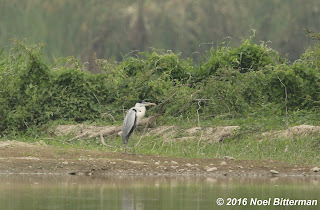

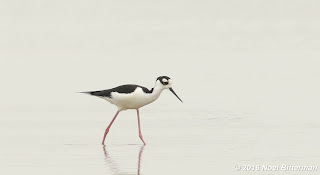


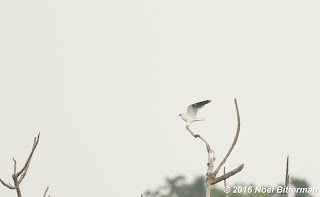


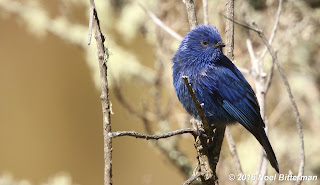
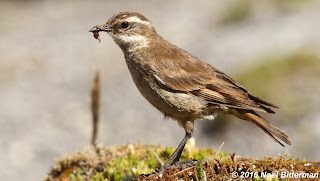


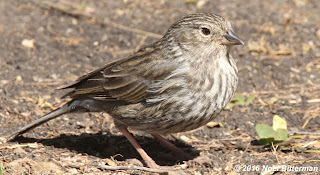





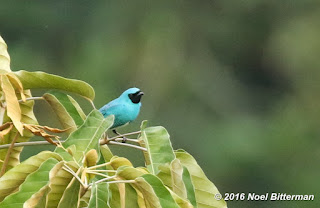









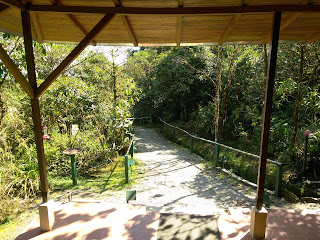




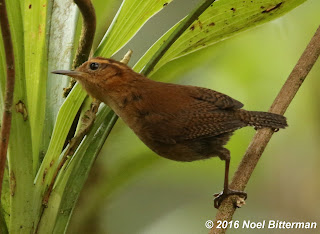




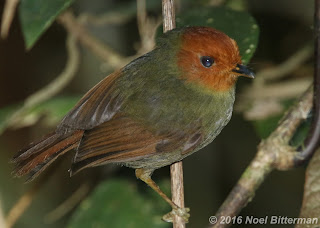




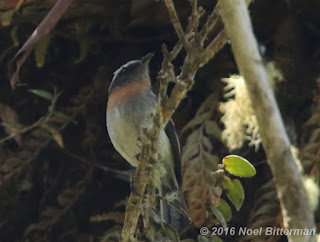







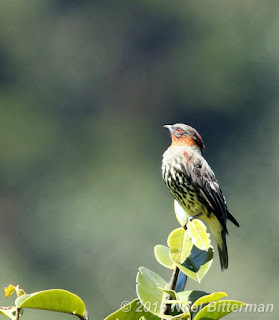



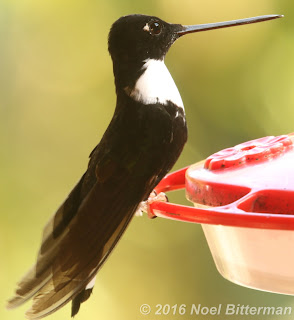












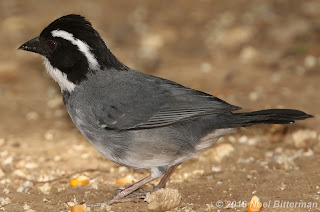

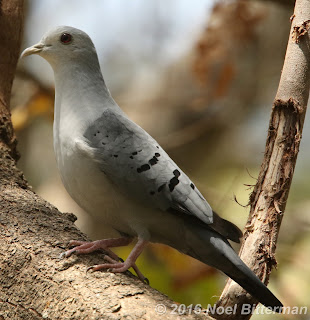







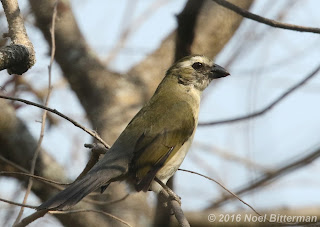




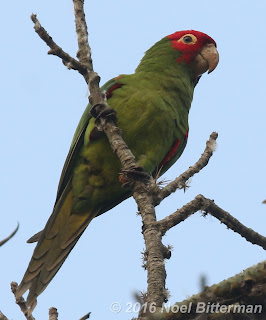


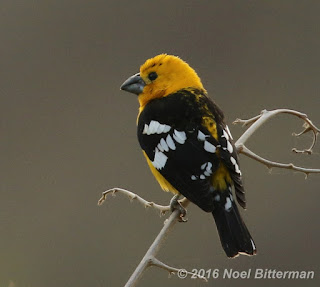




















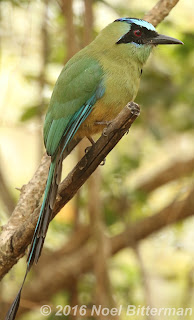







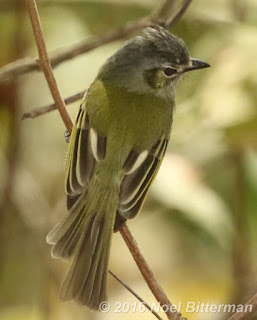












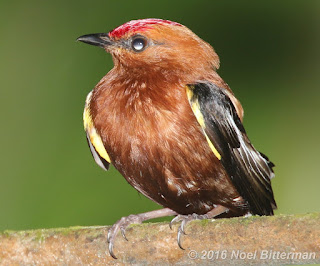



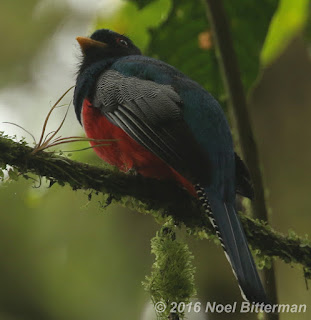

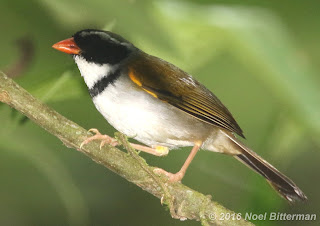
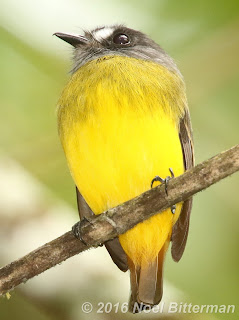
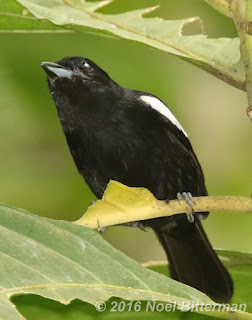



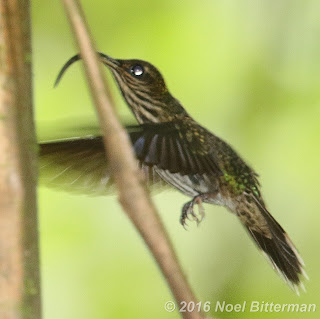







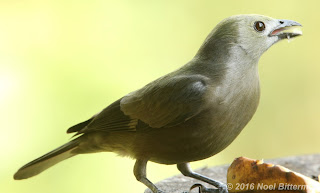




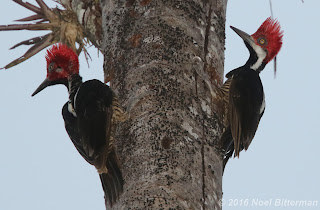



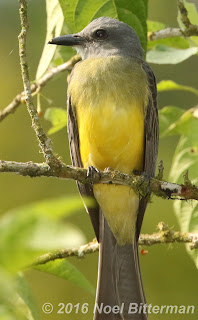


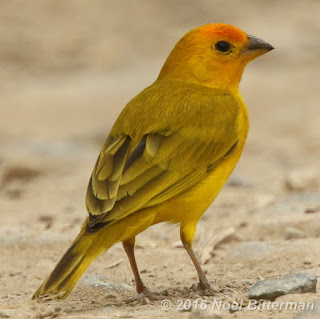








great job guys.....love your shots.
ReplyDelete